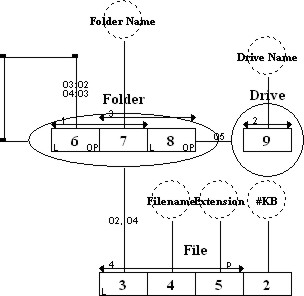FCO-IM - Data Modeling by Example
Do You want to visit a presentation about Fully Communication Oriented Information Modeling (FCO-IM) in Frankfurt?
I’m very proud that we, the board of the TDWI Roundtable FFM, could win Marco Wobben to speak about FCO-IM. In my opinion, it’s one of the most powerful technique for building conceptual information models. And the best is, that such models can be automatically transformed into ERM, UML, Relational or Dimensional models and much more. So we can gain more wisdom in data modeling at all.
But, what is information modeling? Information modeling is making a model of the language used to communicate about some specific domain of business in a more or less fixed way. This involved not only the words used but also typical phrases and patterns that combine these words into meaningful standard statements about the domain [3].
Example
- Model - nicely structured and useful description, e.g. a simple chart
- Words - client, order or here: roundtable, presentation
- Statements - “Client J. Jefferson orders the articel called FCO-IM book.” or “There is a talk FCO-IM - Data Modeling by Example presented by Marco Wobben, organized by TDWI Roundtable FFM”
At the TDWI Rountable FFM Marco will show us what fact oriented modeling is, transform it and generate output like SQL:
Q: Data modeling is described as a craft and once completed the results may even seem artful. Yet outsiders may see data modeling as abstract, time consuming or even unnecessary. In many cases the data modeler interviews business experts, studies piles of requirements, talks some more, and then, hocus pocus, presents a diagram with boxes, crows feet, arrows, etc… Then the slow process begins to keep the diagrams up to date, explain what the diagrams behold, and sometimes even data modelers themselves may get lost while maintaining a growing set of data models and requirements.
A: Fact based information modeling is the very opposite of abstract. Fact based information modeling uses natural language which expresses facts that are intelligible for both business and technical people. It does not require people to understand the modeler’s magical language of boxes and arrows. Although models can be presented in several diagramming notations, they can be validated in natural language at all times. This gives both data modelers, technically skilled people, and business people the benefit of having a well documented and grounded data model. Therefore the method of Fact Oriented Modeling, is also known as “Data Modeling by Example”.
Presentation Highlights
- key elements of fact oriented modeling
- data modeling with facts
- visualizing the model
- validating and verbalizing
- transforming and generating output (E.g.: SQL, Relational, UML, XSD, PowerDesigner, etc.)
Looking forward to meet you all at the TDWI Roundtable FFM on 26. January 2017. To register for this free event follow the link. If you want to prepare upfront this TDWI Roundtable FFM go to the resource section below.
So long,
Dirk
Resources
[1] CaseTalk, Modeling Tool for FCO-IM: https://www.casetalk.com/
[2] FCO-IM http://fco-im.nl
[3] Book: Fact Oriented Modeling with FCO-IM; 2015; Jan Pieter Zwart, Marco Engelbart, Stijn Hoppenbrouwers
[4] Book: Fully Communication Oriented Information Modeling (FCO-IM); 2002; Guido Bakema, Jan Pieter Zwart, Harm van der Lek (Download PDF here)
[5] FCO-IM Pictures: Thanks to Marco Wobben for his permission to use the pictures from https://www.casetalk.com/support/examples/70-example-folders-and-files.html

